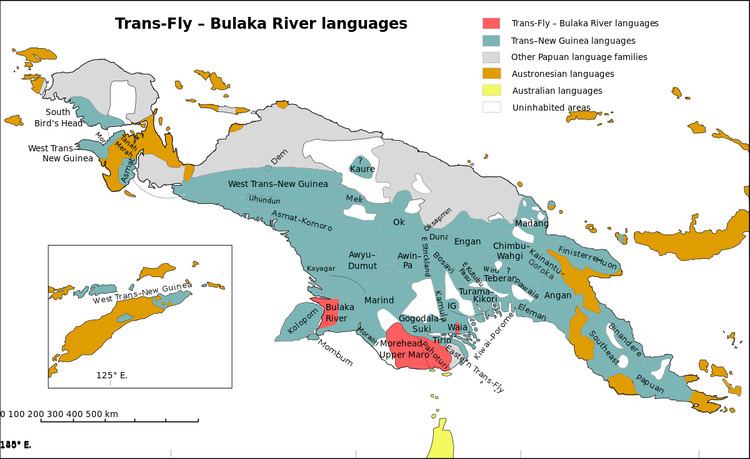Glottolog None | ||
 | ||
Linguistic classification Proposed language family Subdivisions Bulaka RiverWaiaPahoturiYam | ||
The Trans-Fly – Bulaka River aka South-Central Papuan languages form a hypothetical family of Papuan languages. They include many of the languages west of the Fly River in southern Papua New Guinea into southern Indonesian West Papua, plus a pair of languages on the Bulaka River a hundred km further west.
Contents
The family was posited by Stephen Wurm as a branch of his 1975 Trans–New Guinea proposal. Wurm thought it likely that many of these languages would prove to not actually belong to Trans–New Guinea, but rather to have been heavily influenced by Trans–New Guinea languages. Malcolm Ross (2005) concurred, and removed most of them.
Classification
None of the families are closely related; indeed, it is difficult to demonstrate a link between any of them. Wurm's 1975 TNG branch included the following eight demonstrated families:
Ross (2005) accepted the TNG identity of Tirio, Moraori, and, tentatively, Kiwaian. He split off the four Eastern Trans-Fly languages as an independent family. The remainder of the family, which he calls South-Central Papuan, is only tentatively retained: their pronouns are suggestive of a relationship, but this has not been demonstrated.
A more conservative approach would break up Wurm's Trans-Fly – Bulaka River entirely, with two or three of the families remaining within Trans–New Guinea, and five or six being independent. Evans (2012), for example, argues that the inclusion of the Yam language at least is not justified on present evidence.
Pronouns
The pronouns Ross reconstructs for the three families he keeps together are suggestively similar, but it has not been possible to reconstruct common forms:
